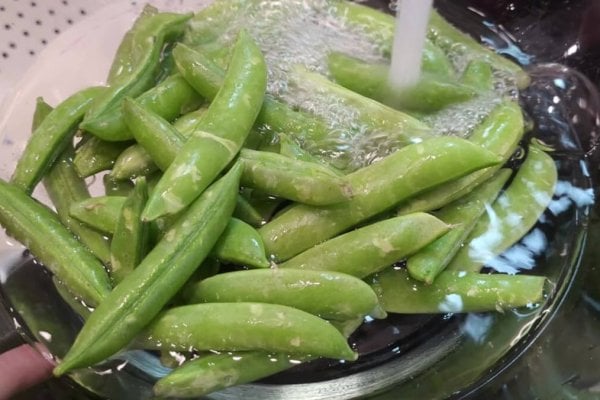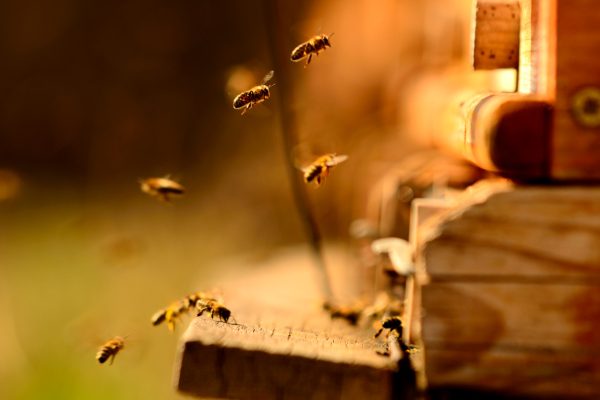
If you’re looking to implement permaculture design on your homestead or even on a suburban lot, you’re in the right place. Join me as I discuss permaculture design, along with the most common mistakes to avoid, with Nicholas Burtner from The School of Permaculture.
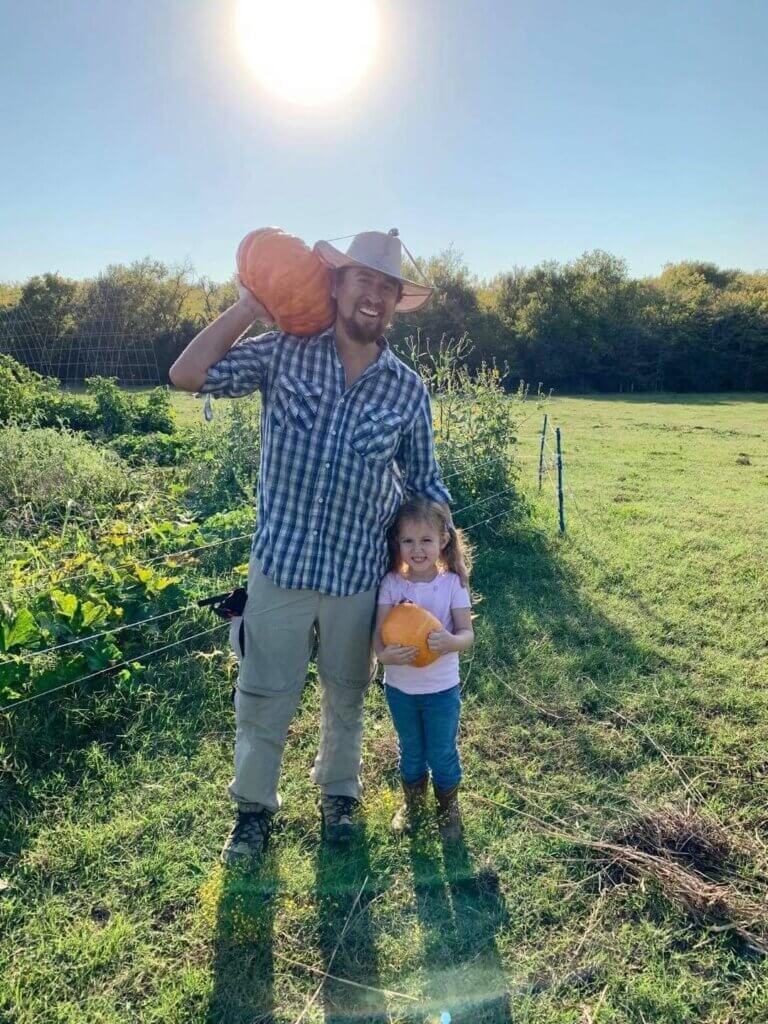
About Nicholas
Nicholas is the lead educator for the School of Permaculture, where he leads the education programs and directs operations at both the farm and suburban demonstration sites for the school.
Since 2012, Nicholas and his team have worked on a large and varied number of permaculture projects from farms and ranches, to suburban homesteads and public parks, to apartment complexes and college campuses.
He has received his permaculture education and training, in person, from the co-originator of permaculture Bill Mollison in Melbourne, Australia. Aside from permaculture, and ecologic-related activities, Nicholas is a devoted follower of Jesus Christ and a father.
He believes that through the application of permaculture, people can find a more meaningful and purposeful existence.
Nicholas also teaches a course on Permaculture Design at the School of Traditional Skills.
What is Permaculture?
It’s been said that there are as many definitions of permaculture as there are permaculturists themselves. Nicholas defines permaculture the following way:
Permaculture is a design system that works with nature to help you provide all your living needs.
But he explains that it’s so much more than that. Permaculture is in everything. He likes to paint the picture of permaculture in these two ways:
- As an expandable tool truck. Inside the tool truck, there are multiple tool bags. Depending on the task and the need, you’ll reach in and grab out individual tool bags for each different project. You may not know how to use all the tools, but as you learn and expand your knowledge, you’ll be glad those tool bags are there.
- As a university. A university is made up of multiple buildings with multiple classrooms in each building. Inside each classroom, various classes are taught on different topics. No two classes are the same, but they can all work together.
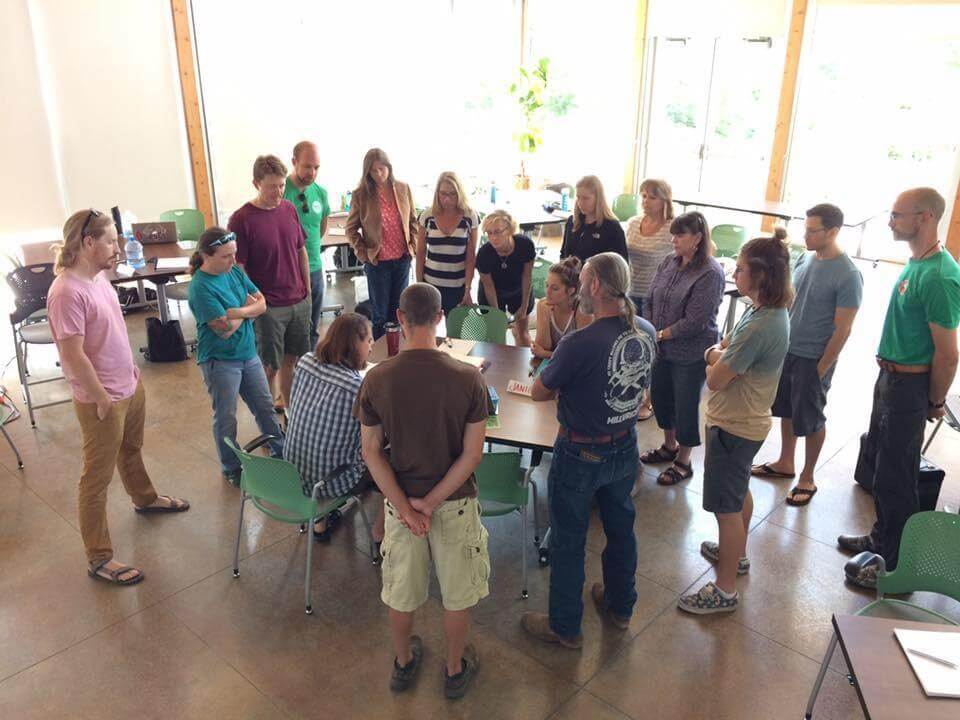
What are the basic permaculture principles?
While it may be easier to think about individual areas of a homestead (the main house, the barn, the garden, the pasture, the fruit orchard, etc.), permaculture looks at them as a whole and how they work together.
When thinking about a home or a homestead, there are various areas to consider. These can be broken down into 12 main principles.
12 Permaculture Principles
- Observe and interact – It’s so important to take time to observe prior to taking action. You must take time to see what’s already happening on your property. Prior to building a garden, you want to know whether it will get adequate sunlight.
- Catch and store energy – This can look many different ways. Catching rain water to use in the garden. Preserving the summer harvest to eat in the winter months. Preserving eggs while the chickens are laying to eat when they slow down.
- Obtain a yield – Make sure all your hard work pays off by obtaining a yield. If you’re not getting a yield from your work, it’s possible your methods need adjusting.
- Apply self-regulation and accept feedback – Look to all areas of your homestead for feedback on whether your systems are benefiting or working negatively. Adjust and try again, watching for that feedback. By implementing a rotational grazing system, we’ve noticed incredible improvements in the health and sustainability of our land.
- Use and value renewable resources and services – A perfect example of this would be in the garden. Build up healthy soil by making your own compost. By feeding the soil we no longer need to worry about feeding the plants because we know they’ll get everything they need. Heating a greenhouse without electricity is another good example.
- Produce no waste – We do our best to have a zero-waste homestead. We’re always trying to improve those areas where we see waste. Take a look around, look in your trash cans, take note of those areas of waste and start implementing systems to eliminate waste. Eliminating food waste is one of the best ways to also save money at the grocery store!
- Design from patterns to details – Designing from patterns goes back to the basic permaculture zones on a property. As Nicholas mentioned, having your driveway on the other side of the garden where you have to walk past it every time you go out to your car is a great way to know the garden will get adequate attention.
- Integrate rather than segregate – As we’ve said before, there’s no such thing as self-sufficiency. Community-sufficiency is what we need to focus on. How can you work with your neighbors and those in your community instead of removing yourself?
- Use small and slow solutions – Slow and steady always wins the race, right? Don’t jump in too quickly. Implement each new system one at a time. Once one system is running smoothly, then move on to the next.
- Use and value diversity – There’s a reason the mono-crops from Big Ag have damaged the life of the soil all across America. They’re not healthy and they’re not sustainable. Diversity on your homestead is so important. In the garden, for example, if planted with only tomatoes, what happens to that crop if you experience a late frost? All the tomato plants will be wiped out and you’ll have nothing left to harvest. Diversity is also crucial for your animals, the gardens, for the pollinators, etc.
- Use edges and value the marginal – We love looking at unused areas of our homestead for production. Last year we inoculated the woodchips on the edges of our garden paths to grow Wine Cap mushrooms. Each year Carolyn forages for Arnica flowers to create homemade arnica oil (perfect for this homemade arnica salve recipe). Don’t overlook the edges!
- Creatively use and respond to change – Fear is never a good motivator. Though sometimes that’s what it takes to get us to act. Instead, utilize preparedness practices for the unknown. For more posts on being prepared be sure to check out the following:
- How to Prepare for a Power Outage
- Preparing for Inflation and Food Shortages
- Emergency Preparedness
- Homesteading Skills to Learn Now
- What to Do in an Emergency Until Help Arrives
- Preparing for Winter on the Homestead
- Positivity and Preparedness in Uncertain Times
- Building up a Well-Stocked Pantry (+ Long-Term Food Supply)
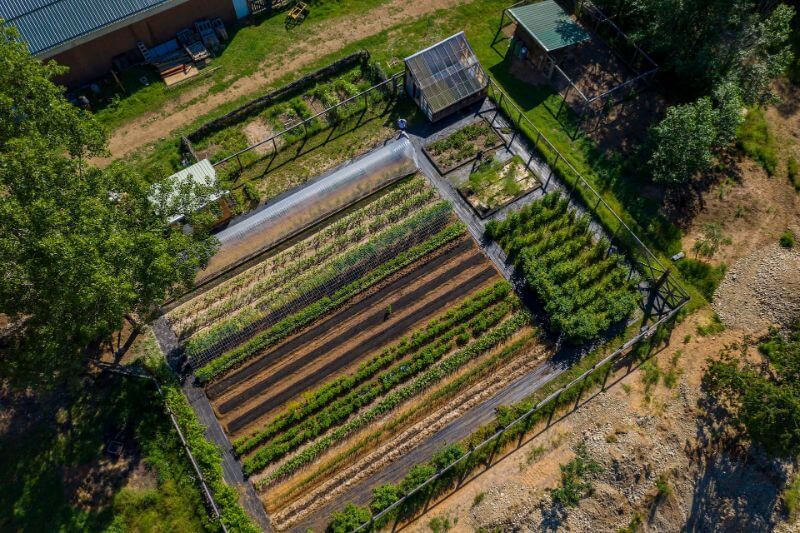
How Does Using Permaculture Design Benefit a Homestead?
As you learn and implement permaculture design properly, it gives you tools and resources for your homestead. You eventually end up with closed circles. These complete working systems all work together and, ultimately, make your day-to-day life easier.
An example of a closed circle:
- Keep a “chicken feed” bucket in your kitchen and put all your kitchen scraps into that bucket.
- Then take that bucket out each day and feed your chickens the scraps.
- They will lay eggs for you to eat.
- And they’ll also create manure that’s great for the compost pile.
- Once that compost has broken down, you now have rich fertile soil amendments to add to the garden.
- Your garden grows healthy flourishing crops to feed your family.
- The chickens get the next round of scraps from those crops.
These closed circles and properly working systems will save you time, money, energy and resources.
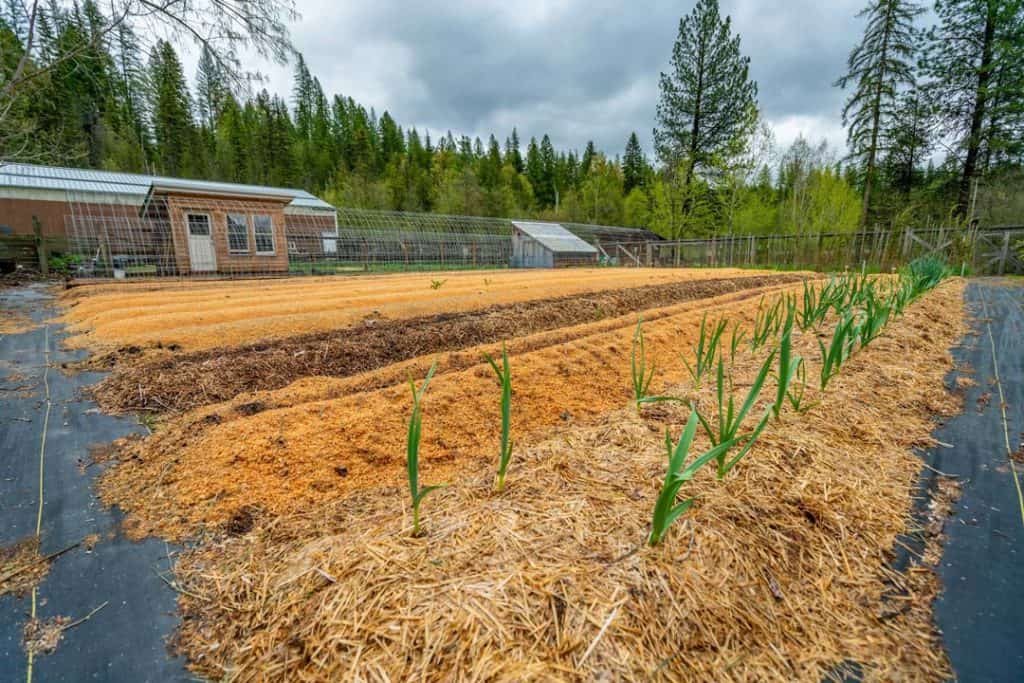
Permaculture Design Mistakes
Moving Too Quickly
Nicholas jokes that one of the biggest mistakes people make when implementing permaculture design is to “eat with their eyes.” He relates this to a buffet table spread out with all kinds of delicious food. You’re looking at the food and you want to try everything… so you do.
Before you know it, you’re sick because you’ve overdone it.
Permaculture design is the same way. As we begin to study permaculture, our eyes are opened to the many areas of implementation. The more and more we learn, we want to implement everything all at once.
It’s best just to slow down, take your time, learn and implement one new skill at a time, and do it well.
Under Planning
Don’t make this common mistake of under planning. It’s easy and common to want to jump in with both feet. But don’t make this mistake! Nicholas shares of people being so excited that they bring home the chickens, the sheep, the goats, and the dairy cow all at once.
They become so overwhelmed because they haven’t taken the time to implement the proper structures, systems and knowledge. All too often, this leads to burnout and sometimes, people even end up quitting altogether.
Over Planning
Though many people will under plan when it comes to implementing permaculture design, there’s the other side of the spectrum where people will over plan. It can easily turn into analysis paralysis.
Just like Joel Salatin says, “Good enough is perfect.”

Where to Learn More
This is just a brief overview of permaculture design. A 10,000-foot view, if you will. If you’d like to learn more, be sure to check out Nicholas’ course on Homestead Planning and Design inside the School of Traditional Skills.

Where to Find Nicholas
- Homestead Planning & Design Class – You can take Nicholas’ Homestead Planning and Design class inside the School of Traditional Skills.
- The School of Permaculture – Check out Nicholas’ website and grab a free introduction course when you subscribe to his newsletter.
- YouTube
Josh: Hey guys. This is Josh with Homesteading Family, and welcome to this week's episode of The Pantry Chat, Food for Thought. This week I'm excited to have Nicholas Burtner here from the School of Permaculture. Nicholas has been teaching permaculture, homestead design for a whole lot of years and really excited to bring him in. And we're just going to talk about permaculture design and how to use permaculture and specifically design on your homestead or your property wherever you're at.
And Nicholas, for those of you that don't know him, is the lead educator for the School of Permaculture, where he leads the education programs and directs operations at both the farm and the suburban demonstration sites for the school. Since 2012, he and his team have worked on a large and varied number of permaculture projects from farms, ranches, suburban homesteads, and even public parks, to apartment complexes, and college campuses.
So he's got a ton of experience all over the place and he's going to have some good stuff that can help all of you wherever you are at. Now, Nicholas received his permaculture education and training in person from the co-originator of permaculture, Bill Mollison in Melbourne, Australia. I know he also studied under Jeff Lawton, which is who I got my PDC from. And aside from permaculture and ecologic related activities, Nicholas is a devoted follower of Jesus Christ and a father. He believes that through the application of permaculture, people can find a more meaningful and purposeful existence. Nicholas, it's so cool to be hanging out with you again and have you here today. How are you?
Nicholas: Thanks for having me, Josh. As always, I'm doing great, especially when I get to talk with you. I'm doing really good. A lot better than I was this time last year, but happy to be here, so thanks.
Josh: Right on. Glad to hear that. Glad to have you here. Tell us a little bit about the school permaculture.
Nicholas: Oh my goodness.
Josh: What are you doing over there? I mean, just kind of a quick brief. What's it all about?
Nicholas: Yeah, so the School of Permaculture, and let me back up for a second, so I need to update my bio. Couple things on there, but one is, yeah, lead educator, but really, I've changed my title. I'm now professional learner, right? That's what I'm doing all the time. I'm learning constantly.
Josh: Yes, sir.
Nicholas: Yeah, so that's one part of the school is the education part, just consistently learning. Then there's aid work. So for example, a couple months ago I was back in Iraq and there'll be more in the future. There's a refugee camp there for Kurdish refugees, which is a crazy situation. Maybe sometime we can talk about what's going on with the Kurds.
Josh: Yeah.
Nicholas: And then consultation. So the school kind of does those three things. 501c3 nonprofit. That's why one of the reasons things can be heavily discounted when it comes to education. And so very welcoming to all people of all walks of life, really just goal-oriented to help people and obviously help the planet through the tools of permaculture.
Josh: Yeah, yeah. You're having a huge impact not just locally, but across the globe, and that's really great to see. And I think, so Nicholas and I actually were hanging out for a week here just what, four weeks ago?
Nicholas: Yeah.
Josh: So we've got a class we just released in the school of traditional skills where Nicholas is teaching homestead design. And we were filming that, and I think Nicholas, you were telling me that you're going to Costa Rica soon for a project. Am I remembering that right?
Nicholas: Yeah. So one of the things I try to do, professional learner. Even though tons of students come through all the time, one of the things I really like to do is at least try to do once a year continuing education for myself. And so there's some natural building going on there. This particular round, I'm really going to try to focus in not only on plastering, but waddle and dob construction with Rancho Mastital there in Costa Rica. So I'm going to spend some time with him and absorb and be a learner there. So come back and probably utilize those skills here in two months so we can have some onsite natural building classes here as well, doing all types of anything from straw bale to cob, adobe bricks, waddle and dob. So it's continuing education, this particular project.
Josh: Yeah. Well, I mean you're an inspiration in that as well because it's just something we all need to always be doing. It's part of the homestead life is not just doing out there, but continuing to learn. Continuing to learn new methods, new techniques, and how to apply things in our context.
Nicholas: Yeah and we've talked before too. I appreciate you saying that, but really I kind of get inspired by the guys who can pull all this together, like yourself, you and Carolyn to be such a massive amount of communication and getting people together. That's just hard to do, man. That's hard to do.
Josh: Well, thanks. Yeah, that's where we're blessed. We're blessed to be able to share in the way we do and really start to connect with folks like you a lot more at this point. So I'm just excited to talk about permaculture. We're approaching it a little more from the homesteading lens and applying permaculture and sharing that with the world through the homesteading lens. And you've been an influence on that and on our journey, oh gosh, I don't know, easily since 2007, I think.
And it's just great to throw ideas around and get to be here and share them with other people and helping folks see how valuable permaculture is to their homesteading journey wherever they're at. And it's valuable for everybody, I think.
Nicholas: Yeah. I mean when you said that, what triggered in my thoughts were I was just at the Mother Earth News Fair. We had a booth there and you see tons of home setting things happening. There's like Sean and Amy from Crunchy Mama Farms were there, and he's talking about butchering cattle and beef. And there's medicine making. There's tinctures. There's herbs, there's garden. There's all types of skills, like how to sew up if you have a cut, how to sew for animals and for humans, like homesteading skills, school, traditional skills, right?
Josh: Right.
Nicholas: And maybe you can help me. Maybe you could help, or anybody listening to this can help me. I have a hard time saying the truth because it sounds so pompous. It's like, yeah, all these things that you're doing here, they kind of all fit under the umbrella of permaculture. You know what I'm saying? All of that is, and it's what you're saying, it's so valuable. It's so flexible.
I guess now that I've said that, it's such a flexible set of tools that are continually being added and subtracted to and evolving. So whatever your context is, you're homesteading in an apartment or five acre hobby farm or whatever it is, 5,000 acre ranch, it's this okay, you're going to do these things. Well, permaculture comes in and glues all of that together for you, and then shows you things that you probably weren't even thinking. And then connects them and then uses the waste products of some of those things, and then to the inputs of others. I mean you know, Josh. You get it, but it's hard to have that conversation from my point of view with somebody who's just learning without just coming across brash. You know what I mean?
Josh: Yeah. And I think that's a little bit of what we're going to try to boil down a little bit today for people to make it approachable because it can. I mean some people think it's just gardening and that they hear about it. Some people think it's just far out environmentalism. And people give these different concepts maybe wherever they've touched base with permaculture, however they've been exposed to it.
And then if you go, which we'll get into in a minute, to some of the technical explanations of it, there's all these principles and rules and they're valuable. I like to think of it as a paradigm and a toolbox. The way you put it is great, it's a box of tools. It's a mental box of tools is where it starts to me and it's a paradigm that helps us design, manage, and steward our resources, I guess is kind of my thing to try to boil it down. And then from there, we can try to unpack it a little bit. And with those thoughts, we're actually going right into the first topic, and that is there's going to be a lot of people here maybe that don't know what permaculture is or what it means. And so I want to hand that off to you and just run with it to you. Explain to us what permaculture means without sounding too brash or harsh, Nicholas.
Nicholas: I'm going to try hard. I'm going to try hard. The facts are facts though. No, no. Well, it's interesting because it has been said there is as many definitions to permaculture as there are permaculturist, and you just had one yourself, right?
Josh: And it's my own.
Nicholas: And the thing about permaculture is it is decentralized, so that's okay that you have that.
Josh: Thanks.
Nicholas: And it was right. It wasn't anything wrong with it. Later on though, do clarify specifically for my own curiosity. What do you mean by paradigm? But if I had to explain it, I boil it down to a couple of ways, like three. One, it was kind of already the tool truck. So one way to look at it is it's this tool truck that can shrink and expand. It's an expandable tool truck, and then inside of it is tool boxes and tool bags. And so whatever you're working with, you pull out the right tool bags to do the job.
So if you're building a house and you can do plumbing and electrical and sewage and all that stuff, you're not going to take out the copper sweating equip equipment if you're running electrical line, right? So it's like you're pulling out the right tool bags, or even if you're working on a car, you're not going to pull out the 12 two conduit for running wire through your walls. So that's one way to look at it. Right?
If you're on a suburban site and you're probably, if you're quarter acre less, you're probably not pulling the dairy cow tool bag out or the 30 head of cattle. But you probably are doing small greenhouse, compost area and things in the gardening aspect of it. So that's one way to look at it. And then the other way is like university.
So like what you had just said, a lot of people, they come to permaculture and we don't do ourselves any favors. I mean, if you look at me, I do look like one of those radical environmentalists, but I'm not. And it's okay if you are though too. But a lot of people get into permaculture because they're thinking, oh my goodness, I saw an herb spiral. And sometimes that's worked to the detriment, I think of permaculture because they get the idea of herb spiral and then they go do 20 acres in a spiral. And it's like, wait, that was taking the concept-
Josh: That's a mountain.
Nicholas: Right. That was taking a scripture, taking one verse, and it was like, wait, it's out of context. You got to read the whole thing. You know?
Josh: Sure.
Nicholas: And so it's like, okay. Well, you get in one way and then you realize, whoa, this is a lot. There's a lot going on. So it's like university. There's architecture. Just today I was talking with structural engineers and architect for small earthen buildings I want to build. And how to utilize the natural phenomena of the sun to heat and cool your house with thermal mass, and now you're constructing things out of earth. And that's a whole conglomerate of teaching that it's a specialty. Well, that's one part of permaculture.
Your gardens were just regular gardening, but then there's all these keyholes and pathways and then running chicken systems and how to feed your chickens in your garden with a pond and crawdad traps. So it's a lot, but all of that's just one thing. And then it's like, well, wait a minute. I could plant one tree and in X amount of years, I can have more flour from those acorns than I can every year by planting two acres of wheat. And it's like, well, okay. Well, the perennial systems and tree systems and hydrology of landscape, and then well, all that fits into the climate that we're in. What's the soil type? What is the soil life? These are huge, huge things.
Oh, then the anthropology. What were the indigenous people doing here prior to colonization? Which little tangent, when I was in Iraq, I had the same thing I just said. I was like, you try to think about your landscape pre-civilization, not realizing that I was at the center of the dawn of civilization. How could I say? They had no concept of pre-human. It was a funny thing.
Josh: Right. What are you talking about? We've always been here.
Nicholas: Yeah, we've always been here. So I had to restructure my teaching, but that's another way to look at it. And it's inspiring and it's fascinating and it's fun. And you'll never master anything and you've got to be okay with that. Professional learner, we can all do that because you're never going to get everything perfect. And even when you feel good about a design, you have somebody like myself look over your shoulder and yes, atta boy, atta girl, whatever. When you install it's not going to look like how you think it is. It's not going to be managed how you think, and that's okay. Right? That's okay.
And then I'll sum this up with then the third ways is, like you, I have words for a definition of permaculture. And it's not as exciting as what I was just saying with all these different disciplines like university and whatnot. But it's easy to understand, and it's a design system, Josh. It's a design system that works with nature to help you provide all your living needs.
Josh: Yeah.
Nicholas: Yeah.
Josh: Yeah, that boils it down real well. I'm a builder as my background, homes, remodels, custom homes, what I used to do in a former life, and I like your analogy there. And as you were talking about the toolboxes and different systems, it made me think about a home and how a home comes together with all these systems working together. And a lot of times we think about the landscape and there's gardens over here and the chickens are over there, and the cows are out there and the orchards over here, and it's all separate pieces. And what permaculture does is kind of like that the way a house comes together with integrated systems, it brings all those things together to work together. Which accentuates, if you do it well, each of the systems and creates abundance and less work at times. So that was a new thought for me as you were talking through that. I really like it.
Nicholas: And can I add something to that? It's in there, but I just want to bring it out just to see it. But then when you put all those systems together in a house, a good architect will look at that and go, "Okay, what does the actual flow for a human look like?"
Josh: Yeah.
Nicholas: Right? So you got all the systems and they all work, the light switch works, but wait and back up. Actually visualize yourself walking through this thing or is the door in the right place? Your bedroom door next to the front door, are they going to cause issues when they open up? Is your kitchen in a U shape where it's very efficient the way you can work that? Same thing with the landscape.
From your house, the most efficient garden. Here's a little pro tip, and if I'm not mistaken, I think I actually got this from my buddy in Santa Barbara, Lauren Liondike. So he's like, "Well, look like the most efficient garden is you have your house and you have your car. And if you park and you have to walk through your garden, That's it." Right?
Josh: Yeah.
Nicholas: Yeah, that's what we're saying, that flow, right. That day-to-day walk and in the class that we were doing here with the school of traditional skills help you. We help you look at that, like what does your actual life look like? And realistically, because you're dreaming and that's okay to dream, I dream every day, not at night though. You're dreaming and you have these visions and desires, but then let's take that dream and make it as real as it can be and look at those flows and kind of back out and okay, now we have a house. Now we have a landscape. Kind of like with what you're saying.
Josh: Yeah, but it works. I mean, that's powerful. Just that principle right there, putting that garden in that location where you see it every time you come and go and because you see it, inherently gets the attention it needs or you get to harvest out of it.
Nicholas: Yeah.
Josh: Those things can seem subtle, but they're super, super powerful. So let's dive in a little bit and what are the basic permaculture principles? To bring this down, we're talking a lot of theory and bigger concept a little bit. So to start to bring it in a little bit, just what are the basic permaculture principles?
Nicholas: Okay, so Josh, there are a number of principles. When I teach permaculture design course, actually, I gave you three sets of principles. Two of those sets can be found in the Permaculture Designers manual, and then one of the sets is found by David Holmgren. You go to permacultureprinciples.com, and those are the official principles.
As I have thought about numerous times when I start thinking about principles, there's this undercurrent of what's happening in all those principles. And so I call them the core tenants, and then I see one. And it's taken me some years to be able to see this first and foremost, and I don't have them all, but I see these are the underlying goals that are happening in everything that you're doing and permaculture. And think about the words like permanent culture, how do you even have that permanent culture?
So one of those kind of core tenants, core tenants is to produce resources for humans. But that's one part. There's something else that's also happening that is a radical claim that only permaculturists make. And it doesn't sound radical on the surface, but when you study history and you study civilizations and the collapse of civilizations, what I'm about to say, it just doesn't line up.
So you're trying to produce resources, which is a mining operation. It is extracting minerals, extracting nutrients from soil and whatnot, and then you're producing that. But if you don't regenerate the soil simultaneously at least to equilibrium, then you're always running in a deficit. So permaculture makes a radical claim to regenerate the soil enough to produce the resources for you and your family to have food and not deplete the soil.
That is a radical claim. All agriculture today, even the regenerative agriculture, which is much better, it is still running in a deficit, especially conventional agriculture. When you're spraying and then pulling the crop off. The only reason our Midwest is not just completely desertified is because of the technology of artificial fertilizers. So we've created a drug habit for the Midwest. All of our farms have to have the drugs now. They have to have them to produce, because most of that topsoil is in the Gulf of Mexico.
So that's one of the core values, produce resources while simultaneously building and maintaining soil fertility. Sounds simple. It's extremely radical. Hardly any civilizations have been able to do it. A handful of sustainable methods like a chinampa or a rice patty systems. And there are names for it, but they're not correct. The original slash and burn, the original concept is also sustainable. But the populations were very small. There's only a handful of them, right? So permaculture is coming along saying, "Oh, we can do that." I mean, it's kind of radical.
Josh: It's a big claim. Yeah.
Nicholas: It's a big claim. Especially since nobody does it, and civilizations end because of it, right?
Josh: Yeah.
Nicholas: So that's like an undercurrent core, principle, value, tenant, whatever you want to call it. The other one is the connectivity of things, of thoughts, of elements. And this is going back to what you had mentioned a minute ago. So you have the house, and so it's integrating the systems.
And so an easy one, especially if you're not aware of permaculture at all, is you have the kitchen. Kitchen has kitchen scraps. Kitchen scraps go into your compost. Your compost can give food to your chickens, but then it gives fertilizer to the garden. The garden grows food. You then get more food for your kitchen. Kitchen scraps go back in the compost. The manure from the chickens who are eating the compost now also goes into the compost. The chickens themselves go into the kitchen. So now it's the connectivity. Pretty soon we'll add a pond to that. And now they're working together. They're integrated, right?
Josh: Yeah.
Nicholas: That's an also underlying current, the tenant, value, principle of permaculture, the connectivity of things. That is permaculture. If you're not doing that, you're kind of just doing things like everybody does it, right? It's just not permaculture.
Josh: Right.
Nicholas: And another one, I'm just going to do three is the idea of perennial agriculture. So I mentioned earlier, so there's an amazing tree, let me give you an example, called the mulberry tree. The mulberry tree gives humans food, gives animals food. It only needs to be planted once, and you can plant it by ripping a new branch off, sticking it in the ground, and you got like 50% chance it's going to grow. It's like the hardiest of all fruit trees. It's amazing.
And it also makes clothes, and it doesn't disturb the soil year after year. Matter of fact, it creates soil by losing its leaves. I don't know of another tree who can make clothes, give you food, give animals food in two ways, and then come back year after year after year. And it's so easy to grow. You're not doing that with wheat, right?
Josh: Right.
Nicholas: Think about it for a second. You planted one tree and you took care of it when it was really young. And mulberry, you probably didn't even take care of it. It took care of itself. Said, "Please stop messing with me. I got this."
Josh: Just let me go.
Nicholas: Yeah, let me go. And what it does is you never have to till the soil again, and it creates soil and it produces all these things for you for years. Where here we are, and don't get me wrong, let's break some bread. Let's grow wheat and barley. This is fair. Obviously we do this remembrance of Jesus, breaking the bread. But if our whole society is based off this heavily input driven thing, this is not sustainable at all. If you're growing your own wheat, which you can do, Small Grain Raising is an amazing book to look at the amount of actual row and space you need for a family of four or six.
Josh: Small Grain Raising, is that the title of the book?
Nicholas: It is. And I say that and it's been five years since I read it, so it might be called something else. I'll tell you later, just in case I'm wrong.
Josh: We'll get a link down below. Our team will put a link in the thread down below.
Nicholas: It's an amazing book. It's an amazing book. So if you want to raise grains, which I think you should, especially oats for your chickens and your other livestock, don't worry about eating the oats yourself. It's almost worth buying them. If you read the book, you'll see why.
Josh: Yeah.
Nicholas: But if we have to have diesel, then we have to have a tractor. The tractor needs maintenance. Every year you're tilling, then you're going back and you're seeding. And then you have to go back with another machine to pull the heads off, a combine. And it's just all of this input, all of this input, all this input. And then you get these grains which are nutrient deficient, where you planted one tree and it gave you an abundance of food with very little maintenance year, after year, after year.
Josh: We like to work hard, don't we sometimes? Harder than we need to. We make it hard. Harder than that has to be, I think.
Nicholas: You're right. We do. We do. So we have this reliance on building systems in permaculture. You can say the word perennial agriculture. That's great. But it's not just that. That's an illustration, right? Annual to this. It's not just that. It's building systems that run. You still have to work. This isn't a pipe dream, but your amount of work lessens great. You're still going to work by the sweat of your brow through the thorns and the thistles, but it's going to be more efficient and it's going to make a lot more sense. And it's going to help. Through these tools, you can help heal humans, animals, plants, and the soil.
Josh: Yeah. So a big part of applying these principles and permaculture is specifically in design. And that's kind of where we want to get to today a little bit. And that can help the average person think about their own property and applying some of these things. And so how does using permaculture design and that... So I think of it in those components, like I was saying, there's kind of designing. There's managing. There's stewarding. There's three of the big ones that I think about. But for the sake of the conversation today, how does permaculture design benefit the average homesteader? The average person that's looking to grow more nutrient dense foods, steward their land well and contribute not just to their family, but maybe to their community. But how does that design benefit the homesteader, the person doing these things on the ground?
Nicholas: So it's a great question. Look at the three biggest parts of your life that hurt when they're not done well. You don't have any more time. I think it's probably your most valuable thing other than relationships is time. Then you have money, energy, and resources. I do it too. I get out there and just do it. I recommend it. I think they just put a short together and here I am saying, "Go out and make mistakes." And I still believe that. I still believe it to a point. To a point. Give yourself a cap.
It's going to cost you five grand to do something one time, and you're figuring it out. And then you're like, "Oh, I guess that didn't work out." You just ate five grand. Right?
Josh: Right.
Nicholas: And so that's one massive benefit to design is I've had student after student tell me when you learn permaculture, you learn so much you didn't know. You're exposed to so much, and you're able to make decisions that lessen your loss of money. That's really big up there. Now, even if that's not an issue, you're like, "I've got an inheritance or won the lottery or whatever," you don't have more time. So here, here's something to think about. Here's something to think about.
When you first embark on your journey in homesteading, you may have lots of experience. You may have none. Here's a real life example. I got a call from a lady two, three weeks ago. She said, "Hey, we just bought seven acres, and I know a lot, but I realize I don't know what I don't know. I have a degree in agriculture. I worked on two ranches, some in ranch country, and here I am now about to set up my own homestead." And let me just pause right there. What just happened?
She has these skills that are very valuable, but are almost useless on seven acres. So she just spent four, six, seven, eight years of her life learning these skills. And I'm not going to say that she's never going to use them. That's not my point. I'm just saying, well, now when it gets down to reality of your time, did she make the right decision to do that? Answer's probably yes and no.
From the aspect of just your homestead, that was a waste of time. From the aspect of learning agriculture, ranching, having the skills to do that, it wasn't a waste of time at all. Right? And who knows what her life could be later. But in your context, when you are first embarking on this, you probably have dreams and desires that you want to do. Well, if you just go out and learn them by yourself, you want to know everything about bees. Bees are amazing. I highly recommend you learn about bees, but they're complex. Bees are actually, in my opinion, they're harder than chickens. And they're not hard. They're just harder than chickens to kind of learn and maintain.
So you're spending time doing that. But then when you actually get to your suburban lot, if you get into a point where you don't actually have bees, then it's a problem. Or if you get to your landscape and you can have bees, that was two years you spent specializing in that. Well, now you're going to spend another two years specializing on one thing at a time?
Well, that's okay, as long as you know what those things are in the reality of your homestead. If you don't know the reality of that, then you're just kind of spinning your wheels and using your time up on things that you like, but it might not actually be valuable. So I highly recommend slowing down for a second and focus in the dreams and then getting a realistic list of like these are the things I need to learn. And praise the Lord, josh did a great thing by creating the... Josh and Carolyn by creating the school traditional skills. So you can learn those skills that you really need, that you really need when you realize what it is that you want. So there's a lot there, Josh.
Josh: Yeah, yeah. No, I think, and Nicholas is right. Nicholas got a whole class with us over at the school of traditional skills that helps break this down and put it into a linear process to apply on the homestead level. But what I hear you saying and where you start out talking about design and the benefits of it, and really it saves you time, which is so, so valuable. Which ultimately is going to help in your relationships, because otherwise you're spending your time elsewhere.
It's helping you use your resources wisely, whether that's the land or money or whatnot to get to the goal. It doesn't mean you don't do, and it doesn't mean you're not going to make mistakes. But I see, and Nicholas, I'm sure you see this. I see it all the time, and I talk to people. I was having lunch with a guy here and an older gentleman here in town that teaches a lot of people permaculture, gardening, lots of things.
And one of the common things we see is people and people that set out to homestead are doers. They want to get out and do it and make it happen. And that's great because you need that strength of will and motivation. But watch people burn themselves up and burn up their resources and burn up their time and sometimes burn up their relationships.
And this friend of mine was telling me he gets people coming to him, and sometimes it's too late. They've exhausted themselves, they've exhausted their resources. And so permaculture design gives you a pathway and some tools. You still got to get out and do, and you got to do and reflect and learn. But it gives you some tools to help you make sure you're using your time and your resources well. Just like that garden between where cars parked in the house so that you're actually seeing the garden regularly and paying attention to it. Permaculture does that all over the place, right, Nicholas? Well, nothing prevents mistakes and failure, and we need those because we learn from those. It can drastically make us more efficient, help us learn better, and help us do better.
Nicholas: That's great.
Josh: In the doing of homesteading.
Nicholas: I'm glad you got to make that a little bit more clear what I was trying to say. Yeah. That's exactly right. Exactly right.
Josh: Well, that's my goal, to condense it down and spin it one way or another. Let's see here. We got a little bit of time left. And my point in that is because it leads into the next discussion topic, and that is the mistakes that people make and that cause some of the challenges. And so we got about five minutes or so. What are some of the common mistakes that you see people implementing in permaculture design or homestead design that are avoidable?
Nicholas: Eating with your eyes.
Josh: Eating with your eyes? Okay, tell us about that.
Nicholas: And even after a permaculture design course too, right? So this homesteading design course that we did is still even take this after a permaculture design course too. And I talk about it in my permaculture design course as well. But now you're a little dangerous after a permaculture design course because you're now aware of all of these things.
Josh: Right.
Nicholas: And then it's just like you go past a buffet table and you're looking at it and you're like, yes, yes, yes, yes, yes, yes. And then at the end of the day, you've got a food baby named Marquis or something, and then you're feeling terrible. You're feeling terrible, so you're doing too much, too fast is what you're doing.
Josh: Okay.
Nicholas: And so one thing to not do is go get a homestead, move in next week. Go get cows, pigs, chickens, dogs, goats cheap. You just, no, no. Go plant a garden right out of your back door. Bill Mollison says, "Get that under control." Maybe add chickens, get that under control and your design, right?
Josh: Yeah.
Nicholas: And then move on to the next thing. And the wisdom in that is far more wise than we give credit to. What's said there without being said is over time, you may burn out, even if it's easy. And if you do too much too fast, you're going to be burning out really quick. And then you're going to go back to the place that you came from because it's familiar with you. But you were dying to leave that for 15 to 20 years.
Josh: This is going to be in a worse state, getting to that place. I think that's so important, what you bring up, because people have a lot of strong motivations right now, wisely so. Food supply, food cost, it's going up. Just the uncertainty, whether it's climate, whether it's the social political environment, people have a lot of motivations for taking the action that they're taking.
And so it ends up pushing people to do all these things you're talking about that you shouldn't do, moving too fast. And so somewhere, we've got to take these things, but move forward with a measure of faith and realize that going too fast becomes counterproductive to where you're trying to go. And so I think what you're saying in that is just slow down. It's going to be okay. You're going to do better, and you're going to ultimately get there faster by slowing down a little bit, being studious, learning some of these design principles is what I would say. Learn from homestead design. Learn from permaculture design. Apply it. Yeah, you're going to mess up. Okay. You come up with a plan, observe, you implement it, step back, observe all of that. But yeah, slow down. It will be okay.
Nicholas: Sorry, sorry. Yes, you're right. Not only will it be okay. Also if I can add something, spend some more time bringing your neighbor some eggs. Bake them some cookies.
Josh: Yeah.
Nicholas: That in itself, that relationship is like there's just so much wisdom in that. Go be a good neighbor. Go be a really good neighbor. You'll be amazed at the doors that opens. I've got so many stories and not enough time. Two more things though, is under planning and just doing. Yes, I kind of talked about that earlier. If you just do it, you're going to redo it and redo it and redo it. But then the opposite, over planning, where you got analysis paralysis where you don't do anything.
Josh: Right.
Nicholas: So those are also common.
Josh: Yeah. Yep. Got to find the balance there. Well, we're running out of time, but there is a whole lot more resources for you guys, as Nicholas has referred school traditional skills. Nicholas did a class for us that it's almost a small subset of permaculture training. It's kind of designing your homestead from a permaculture perspective, but it is just immersed with permaculture perspective because that's just a passion that Nicholas brings to that.
And then Nicholas himself has got a great platform and educational tools you can get. I believe Nicholas, you just tell us. I believe you can even go get your PDC, your permaculture design certificate if you want, if want to dive that deep and a whole lot of other resources. So as we're closing out, Nicholas, how can people find you? Where do you want people to go to get a hold of you, to just get familiar with what you're doing and your resources?
Nicholas: Yeah, well please do. Obviously, taking the the School of Traditional Skills homestead Design course. that material I've been working on in a book for quite some time. It's very valuable for people who are serious into moving into this. And also, yeah, go to schoolofpermaculture.com if you're liking that teaching. It's way deeper with the expanse of not just the design portion, not just the design. It's getting into the techniques, the methods from every spot in the world, from dry lands to tropics, to the temperate climates, from architecture, to working with people and creating invisible systems. It's a lot, and it's fascinating, and you will be inspired by the content. So yeah, if you want your certification, I have a pathway for that. And I also have a pathway for just the content at nonprofit rates. How about that?
Josh: Cool. Right on. Well, thanks Nicholas for hanging out with us. Thanks you guys for coming. We will get you links to all of this in the thread down below or the show notes if you're listening on the podcast. Hope y'all have a great day and a great week, and I will see you soon.
Thanks for listening to this episode of The Pantry Chat, Food for Thought. If you've enjoyed this episode, please subscribe, rate, and review.
Speaker 3: To view the show notes and any other resources mentioned on this episode, you can learn more at homesteadingfamily.com/podcast.
Josh: We'll see you soon.
Speaker 3: Goodbye.
Sign up to receive email updates
Enter your name and email address below and I'll send you periodic updates about the podcast.













